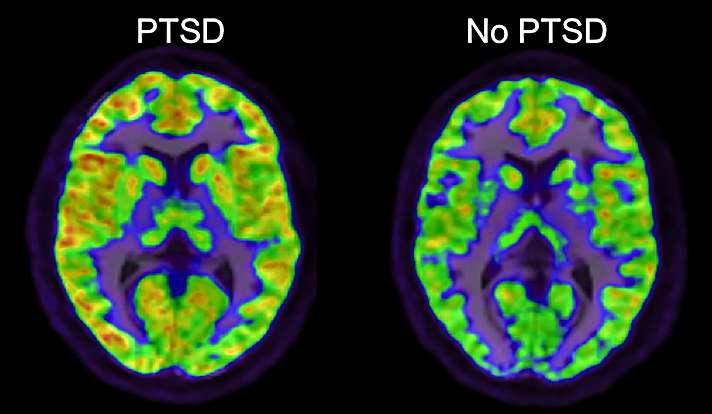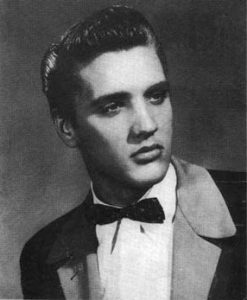Winner of the Fall 2018 StMU History Media Award for
Best Article in the Category of “Military History”
Best Article in the Category of “Science & Technology”
Charles Meyers, a Medical Officer, introduced the term “Shell Shock” to explain symptoms of Post Traumatic Stress Disorder (PTSD) displayed by military after combat in World War I (WWI). Soldiers often experienced symptoms including fatigue, tremor, confusion, nightmares, impaired sight, and impaired hearing. Meyers assumed that these symptoms were caused by the soldiers’ exposure to exploding shells, not necessarily the trauma they were witnessing or going through. In these years, symptoms of widespread PTSD were considered “weak” traits for soldiers by their colleagues and bosses. Even society as a whole started to view these symptoms negatively, which led to the destruction of their relationships after the Shell Shocked soldiers arrived home.1
Military gave Shell Shock victims no sympathy. When soldiers were dismissed from their duties, they were given labels such as “cowardice” or “emotionally weak.” These labels led to soldiers being targeted for abuse from their own side, as well as mock trials in which they were convicted. The pardons they received weren’t honorable, so they were often ashamed of their disorder, which led to more mental issues among the soldiers like depression, anxiety, and even suicide.2

New treatments flipped understandings of how World War I caused drastic changes in the behaviors of these men. Treatment for Shell Shocked victims before Arthur Hurst’s “miracle treatments” were very harsh, as they were often treated with Electroconvulsive Therapy, emotional deprivation, shaming, and solitary confinement. Some of the lesser treatments were hypnosis, massage, rest, and dietary treatments.3
Arthur Hurst primarily used occupational therapy to treat Shell Shocked patients, treating them as humanely and sympathetically as possible. This dignified care allowed for the increased numbers of “saved” soldiers, as they found ways to overcome the abuse and the labels given to them after their dishonorable discharges. Hurst’s treatments became iconic after the Newton Abbott’s Seale Hayne in Devon. Hurst’s approach allowed for 90% of Shell Shocked soldiers to be cured after only a single session.4

Modern day treatments, consist of therapy, as well as new medicines that aid in the control of the symptoms. According to Michael James, a pharmacist, there are Selective Serotonin Reuptake Inhibitors (SSRIs) that block the re-uptake of serotonin in the brain and help with sleep disorders, nightmares, and decreases intrusive thoughts. James also informed me that Serotonin Norepinephrine Reuptake Inhibitors (SNRIs) block the re-uptake of serotonin and norepinephrine in the brain which also decrease intrusive thoughts and provide aid for sleep disorders and nightmares.5
Hurst’s approach led to a change of heart and a consensus to the overall approach by society as a whole. Now, Veterans Affairs, also known as the VA, has a large program that provides aid to veterans with PTSD. However, this evolution of PTSD has not only been beneficial to veterans, but it has also allowed for a more diverse diagnosis of PTSD, in which it is more understood that other people, in addition to veterans, can also experience PTSD. PTSD can be caused from any sort of trauma including car accidents, violent crimes, and domestic violence. Individuals can even develop PTSD from having someone important abandon them as well. The DSM-5 has set a variety of symptoms for PTSD because just like any other disorder, it affects every individual differently. This document allows all individuals to gain access to the tools and help they need to recover from or live with PTSD.6

- Caroline Alexander, “The Shock of War,” Smithsonian Magazine, September 2010, https://www.smithsonianmag.com/history/the-shock-of-war-55376701/. ↵
- “Shell Shock,” BBC Inside Out, March 3, 2004, http://www.bbc.co.uk/insideout/extra/series-1/shell_shocked.shtml. ↵
- “Electroconvulsive Therapy: A History of Controversy, but Also of Help,” The Science Explorer, January 13, 2017, http://thescienceexplorer.com/brain-and-body/electroconvulsive-therapy-history-controversy-also-help; “Arthur Hurst: The Man Who Filmed Shell Shock,” BBC Radio 4, http://www.bbc.co.uk/programmes/articles/4VqPtrjsgcPKtgmYc2M5vXz/arthur-hurst-the-man-who-filmed-shell-shock. ↵
- “Arthur Hurst: The Man Who Filmed Shell Shock,” BBC Radio 4, http://www.bbc.co.uk/programmes/articles/4VqPtrjsgcPKtgmYc2M5vXz/arthur-hurst-the-man-who-filmed-shell-shock. ↵
- Email with Michael James, September 11, 2018. ↵
- Pete Walker, From Surviving to Thriving (Scotts Valley, CA: CreateSpace Independent Publishing Platform, 2013), 13-14. ↵



160 comments
Ruby Wynn
It is terrible that so many of America’s soldiers were shamed about the after effects of them fighting for our freedom. It must be awful to be in war and witness violence and friends dying and have to come home to be mocked and dishonored for it. It gives me hope for the future of our soldiers that doctors have started looking into cures for PTSD.
Samantha Ruvalcaba
It’s sad to read about the negative stigma associated with post traumatic stress disorder back then. Even now, I can see that some of that negative connotation still remains. However, I was glad to learn from this article about the improvement in treatments for PTSD and how doctors today are treating the patients much better than they did when PTSD first became common.
Priscilla Reyes
The article was very informational and although it gave medical terms, the symptoms of PTSD were clearly explained. This is very helpful because it ackowledges the negative stigma around the disorder and explains the causes and potential effects. I can relate witht the fact that people cannot control these as going to war is extremely difficult and I cannot imagine somebody coming back without a certain trauma. Nevertheless, I am extrememly grateful for their brave souls.
Emily Velazquez
Reading this article in the beginning made me feel so sad about the soldiers who were shamed for having Post Traumatic Stress Disorder or PTSD. They could not help this from happening. While they were facing the shame people were giving them, they also had to face the harsh treatments. It makes sense why they would then have depression, anxiety, and suicidal thoughts. This was all so unnecessary, but nobody knew more until the army major Arthur Hurst developed treatments for it that proved to be very successful.
Maria Martinez
It is heartbreaking to read and learn that in the past such honorable men who served the country in ways that so many others could never imagine were shamed and discriminated against for something they could not control. People like Arthur Hurst who paved the road for better treatments and a different perspective of PTSD have done work that has affect so many in such positive ways and hopefully there continues to be research to further help all victims with PTSD.
Makenzie Santana
It is so heartbreaking to know that soldiers were treated so harshly and shamefully for something they had no control over. That their PTSD was seen as cowardice and brought more of a negative impact on these mentally hurt saviors. Hurt saved so many lives with his new methods for treating PTSD soldiers, not only by preventing them from the likely-hood of suicide, but by actually helping them actually live and move on.
Aracely Ortiz Soriano
It’s extremely unfortunate that these soldiers not only had to go through all the horrible effects of experiencing PTSD, but they also had to be insulted with words like “coward”. I feel very grateful for Arthur Hurst and all the new understandings of this mental disorder and I hope that treatment keeps improving for these brave veterans.
Cameron Lopez
PTSD is a growing problem for generations now and it is becoming harder and more challenging to treat the number of patients that are developing this. I don’t like that in the past our soldiers were branded as cowards and deserters, they were seen as being a weak soldier but that is not the case. No one can truly understand what a man goes through in war not even his fellow soldiers, it is something only the person themselves experiences and it takes a lot to at least help them back into a right state of mind. It is good that now there are more places to help these soldiers with their disorder and they are not branded as cowards no longer.
Noah Wesolowski
It saddens me to hear that soldiers in the past were branded as cowards and deserters. In the article they were seen as “weak”. Also how they we mocked in their trials. It is better that now a days they are getting the treatment they deserve and are not being called cowards. Arthur Hurst being one of the main factors for treatment.
Michael Leary
PTSD is a problem confronting veterans mainly that is often not talked about and as a result, not many people know what it is. PTSD or shell shock, was not really known before World War I because not many people went under such strain and stress that occurred then and continues today. I think that people like Arthur Hurst and the VA system are very beneficial to veterans, but, as a country we should still be doing more.